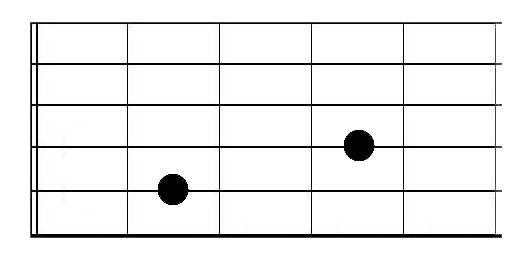Are you just starting out to play the guitar and don‘t know what to do with it? There are many ways to use the instrument in a musical way and the vastness may seem intimidating. To start out why don‘t you learn something you can use right away and will build the groundwork for many musical ideas. Power chords are just what you are looking for.
Power chords are miniature versions of the chords that build modern western music. They are easy to learn and are used in many musical styles.
What makes a power chord?
It‘s a note played simultaneous with the note a perfect fifths above. The A power chord would be the note A and the note E which is a perfect fifth above it. Wait, didn‘t I just say that power chords are simple and now you need to know what perfect fifths are? Well, it‘s really simple. As long as you play on the lowest three strings you just play the note on the next higher string two frets higher up the necks. For the A power chord you could use the fifth fret on the lowest string and the seventh fret on the next lowest string. Play them together and you have an A power chord.

In this diagram you see a B power chord. The index finger should play the second fret of the fifth string and the ring finger should play the fourth fret of the fourth string. Only hit those two strings when you want to play this chord.
Bonus info: Power chords are also noted as fifth chords. So if you see something like „A5“ that means we are playing an A power chords here.
How to apply power chords?
One easy trick to use is to start on any power chord on the fifth string. Let‘s use for example the fifth fret which is a D note. Put the power chord form on the fifth fret and strum the chord. Now you can the experiment with the power chords that are exactly in the same fret but on the fourth or fifth string and with the power chords that are two frets below or above the fret you chosen. All of those chords should sound fine together and give you enough variability to start writing and playing cool songs.
What to do next?
Take your power chords and vary the rhythm. Play some of them longer and others for shorter periods of time. Change the order around. Play two of them at the same time. Play other power chords that are outside of the guidelines posted above. Find power chords that you really like and those you despise. Ask your teacher what songs you can play with these power chords.
More information about the author of this article can be found on his website. Rene Kerkdyk teaches guitar and music in his guitar school Rock Gitarre Hildesheim in Germany.